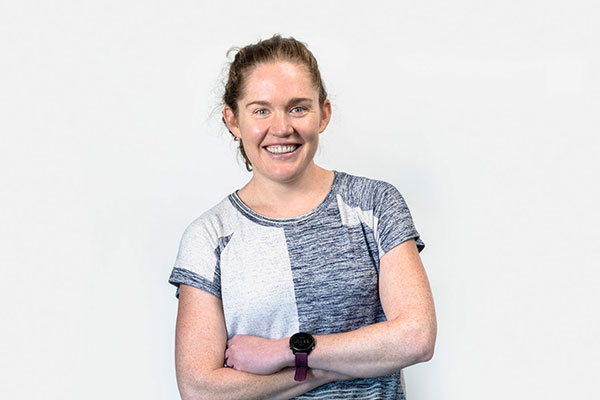THE PERFECT RUNNING SHOES
By  Dan Feeney
Dan Feeney  Kate harrison
Kate harrison
Follow on ![]() @Dfeeney31 and @running_geek
@Dfeeney31 and @running_geek

What is the best running shoe? Perhaps the holy grail for all runners is the perfect running shoe – the one that will feel like running on a cloud, will propel you to a new Personal Best, and allow you to run for endless miles without getting hurt. Such is the importance of the quest for the perfect shoe to runners, that seasonal shoe reviews and rankings are the bread and butter of publications such as Runner’s World and Run Repeat. The simplest answer? No single running shoe will accomplish all these goals. Instead, running shoes function best as part of a quiver where each shoe has its place depending on your goals for a given run.
Quick takes
- There is no scientifically ‘perfect’ running shoe or running form.
- Footwear designed to control pronation has great intentions, but evidence does not support the notion that this prevents injury.
- There is a mismatch between biomechanical and epidemiological injury risk factors and the current thinking of clinicians, coaches, and sales people.
- New biomechanical theories suggest that large deviations from a runner’s preferred movement based on their flexibility and body geometry could be linked to injury.
- The fit of a shoe and training methodology may be more important than shoe category when avoiding injury.

Dan’s Take:
Unfortunately, “it depends” is the most appropriate response here. There are a variety of shoe categories (neutral, stability, motion control, minimal, etc.), that are meant to guide a runner to the perfect fit, using a simple rule like, “If I pronate, I should use a stability shoe.” Those rules, however, should be treated more like guidelines to start the process, but how you feel in the shoe, your training status, goals, and injury history all need to be considered in order to find the perfect shoe for you.

Kate’s Take:
In my own experience, I can’t identify a perfect – or even a favorite - shoe of all the running shoes I’ve had in my life. As my goals have changed, and different injury niggles have cropped up, I’ve found the shoe that works best has changed over the years. And in fact, at this moment, there are many different shoes that work for me. My front closet is stuffed with no less than seven pairs of shoes I rotate through over the course of a week, each for a different purpose: easy recovery runs, long runs, tempos, speed, trails etc.

BOA’s take:
Instead of trying to change the motion of the foot, we aim to create solutions that provide connection, freedom, and flexibility in various areas of the foot in order to improve fit, which should lead to improved performance. A good fit improves proprioception so you can respond to the ever changing environment beneath your feet; it keeps you better connected to the midsole, allowing you to take advantage of whatever midsole technology you choose; and finally it reduces pain due to blisters, pressure points etc. that can make it difficult to maintain form and focus on your run.
Research on the topic
There are two primary goals in running footwear biomechanics: improving endurance and keeping runners healthy. Most runners have witnessed the ‘shoe arms race’ with every brand releasing a highly resilient, carbon-plated racing shoe that makes running faster a little easier (see the first study here). While these shoes are remarkable in their ability to help many athletes gain an extra few percent, a recent study (not yet peer-reviewed) suggests that these shoes may not be the magic ticket for everyone. Many runners experienced a boost in performance, while others saw no change, and some even ran slower than in their own traditional shoes. It is still unclear what factors determine a runner’s response to these “super-shoes”.
In order to run fast, you need to stay healthy through training, which requires a very different kind of shoe. Unfortunately, the research is not so clear cut regarding what kind of shoes will prevent injury. One of the most commonly critiqued areas of running gait is pronation. Beginning in the late 1970s, biomechanists hypothesized that pronation while running could be the source of injury. This hypothesis spawned decades of best-selling stability shoes (ASICS Kayano, Brooks Adrenaline, etc.) to combat this inward rolling at the talocrural joint (near your heel). In a recent summary article by a few legendary biomechanists, Benno Nigg, Anja-Verena Behling, and Joseph Hamill, they note, “The quantification of pronation and supination in real-life situations, such as running, is difficult, if not impossible since the talus bone cannot be accessed from the outside.” If we struggle to even measure this variable, how can we make shoes to address it? Pronation aside, several other variables such as shoe choice, landing forces, and cadence are often thought to be related to running injuries.
Investigating this complex issue is a top priority for running brands – they want runners to stay healthy! Afterall, if you are healthy, you will enjoy running, run more, and need more shoes. Nike released a shoe designed to help reduce injury risk, the Infinity Flyknit React (more info here), where they found a reduction in injury risk compared with another Nike trainer, the Structure 22. While this study does not definitively prove these shoes reduce injury risk, it is a nice combination of biomechanics and epidemiology: all 226 runners performed similar training, which is a huge cofounding variable in running injury research. Claiming a shoe can reduce injury risk is a legal nightmare (see the complications with Vibram 5 fingers from a few years ago), so you will not see many claims in this area despite significant efforts to make shoes that keep runners healthy.

Left Dorsiflexion: bringing the top of the foot and shin closer together
Center Eversion: Turning the sole of the foot out
Right Abduction: Turning toes away from the body
Shoes have long been designed to specifically stop pronation, which is a combination of the movements listed in the figure above; note the high-density foam on the medial side of most stability shoes. While this design intent was noble, it does not appear to have decreased the injury risk. Stability shoes, however, may still be appropriate for some runners, just for different reasons.
How this applies to footwear design and retail
What then, are the individuals at running stores doing when they watch you walk? As a former running-store employee (and advocate for specialty run stores), the employees are genuinely trying to narrow down which shoes may be most comfortable for you to begin trying on. Many will do this under the auspices that they can decrease your risk for injury, however if that is the case, we know it is not by reducing pronation. Nigg and authors continue, “the ‘normal’ degree of pronation is unknown: therefore, it is impossible to determine what is in excess of ‘normal’.” Moreover, as stability shoes gained a significant percent of the market share during the 1980s and 1990s, injury rates were largely unaffected. What they may be doing, however, is helping you find a shoe that best conforms and works with your biomechanics, which seems to be the best indicator of staying healthy (Nigg et al., 2015). These researchers suggest that shoes which do not cause an athlete to deviate from their ‘Habitual Motion Path’ may be the best for them rather than a specific category due to pronation. Watching runners move often helped me narrow down which shoes I believed the runner should start with. After trying some on, we could adjust based on their feedback. This is a key advantage for run specialty stores: the opportunity to try on multiple shoes side by side to select the one that fits best.
What do coaches, clinicians, and retailors think?
There is a mismatch between what runners, running store employees, and physiotherapists perceive as important when considering a running shoe to prevent injury. In a recent survey by Alexander Wolthon and colleagues, only 32.4% and 14.1% of physiotherapy students and running-store employees respectively thought training-related errors were a main contributing factor of injury. Additionally, most running-store employees reported that more expensive shoes are better at preventing injuries. Recent research aimed at finding a causal relation between risk factors and running related injuries points more to dramatic changes in training load being a central cause of running injury (Bertelsen et al., 2017), rather than running form (such as pronation, cadence, or foot strike pattern). Let’s face it, no matter your shoes or running form, running requires you to land and push off with forces of over twice your body weight, repeated thousands of time in a single run. Tweaking your form may allow you to slightly more effectively absorb that force, but ultimately your body needs time to adapt and become more resilient. Moreover, perceived comfort of footwear continues to emerge as a significant predictor of injury risk (Nigg et al., 2015, Fokkema et al., 2017). Not surprisingly, there is a robust association between the fit of a shoe and the perceived comfort; the better the shoe can conform to a runner’s foot, the more likely they are to rate it as comfortable. A well-fitting shoe improves performance by allowing you to stay healthy, while absolutely testing your limits in a race or workout.

The Saucony Switchback 2 was developed with help from our lab. The wrapping design better conforms to your foot.
Around the athlete- what does this mean for the athlete.
The soundest advice for runners is to find shoes that fit you and to incorporate several different shoes during training and racing. Using a variety of shoes with slightly different builds is thought to cause the forces of running to be directed a little bit differently through the body on each run, reducing the risk of overuse injury. A 2015 study by researchers from Luxembourg found that runners who rotated between more than one pair of shoes during a 22-week training block had a significantly lower risk of injury than those who used the same pair for every run.
Concluding remarks
Finding the one, universal perfect running form is a Sisyphean task, because each runner may have an optimal form unique to them, which is vastly different from other runners. Training-related factors are emerging as the strongest predictors of running related injury, so instead of chasing the perfect form, work with a coach to design a training program that is suited for you. Lastly, choose the shoes that best fit your foot and feel the best when running rather than based on foot shape or movement alone.
As always, you can reach us @Dfeeney31 and @running_geek on Twitter.